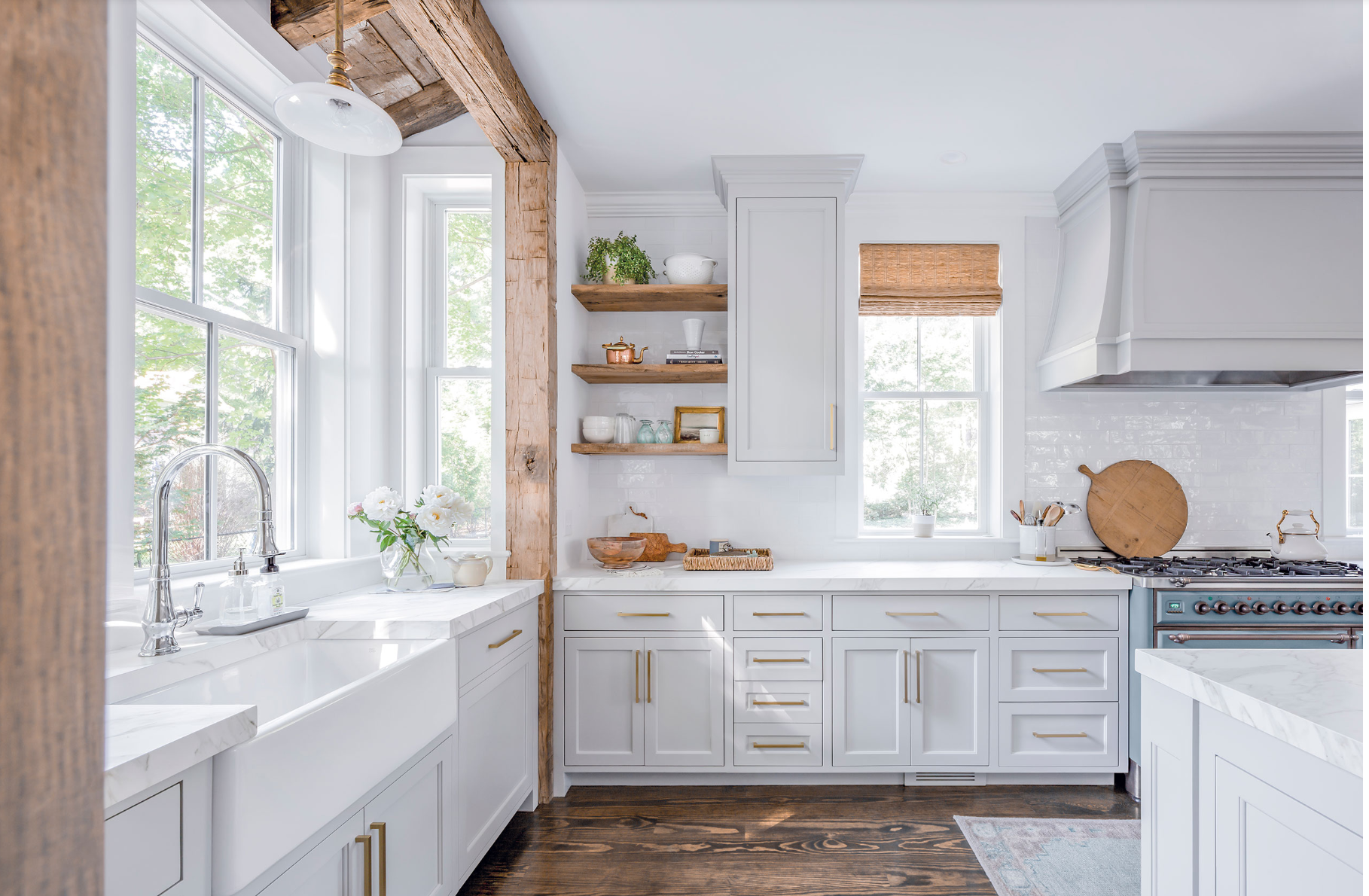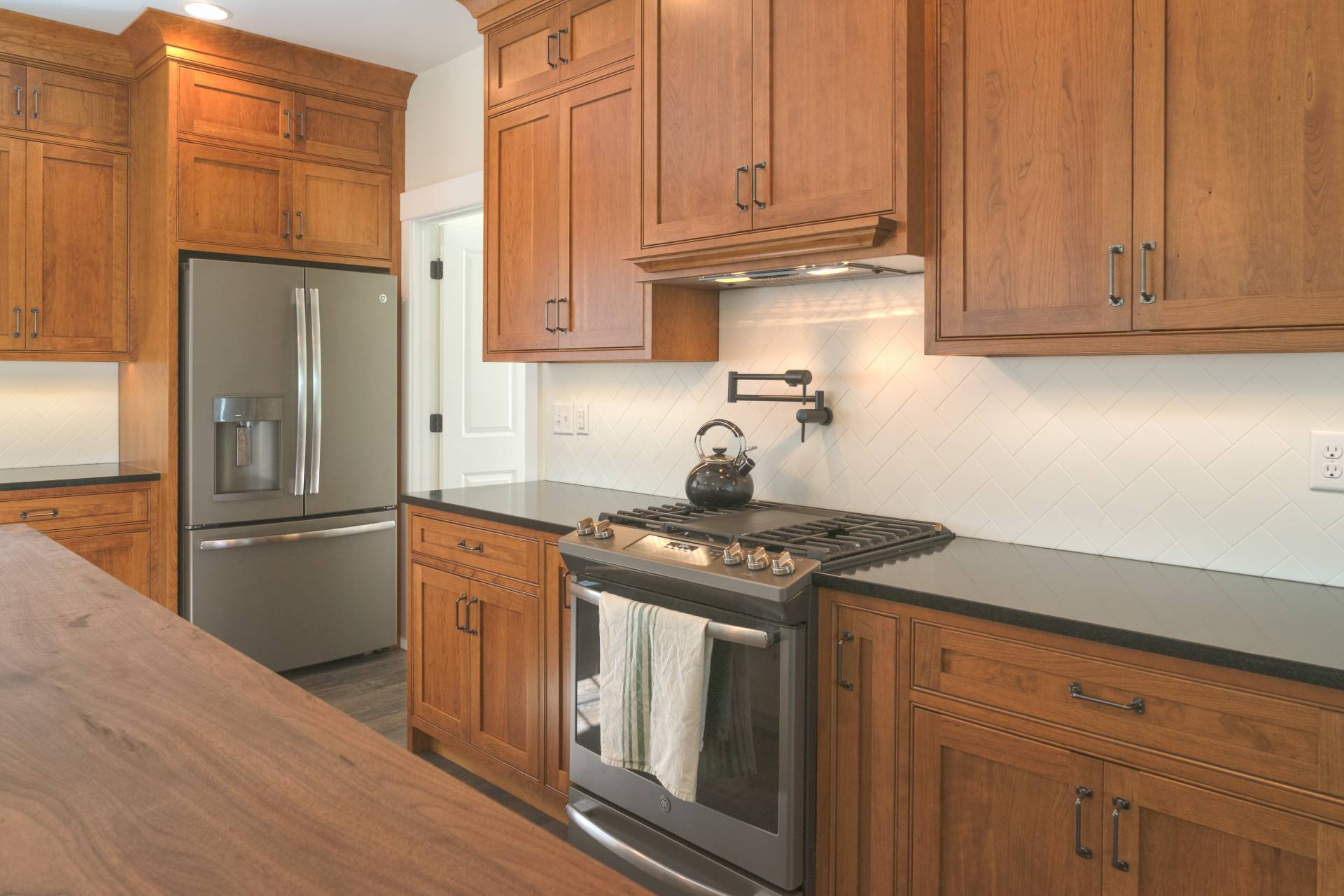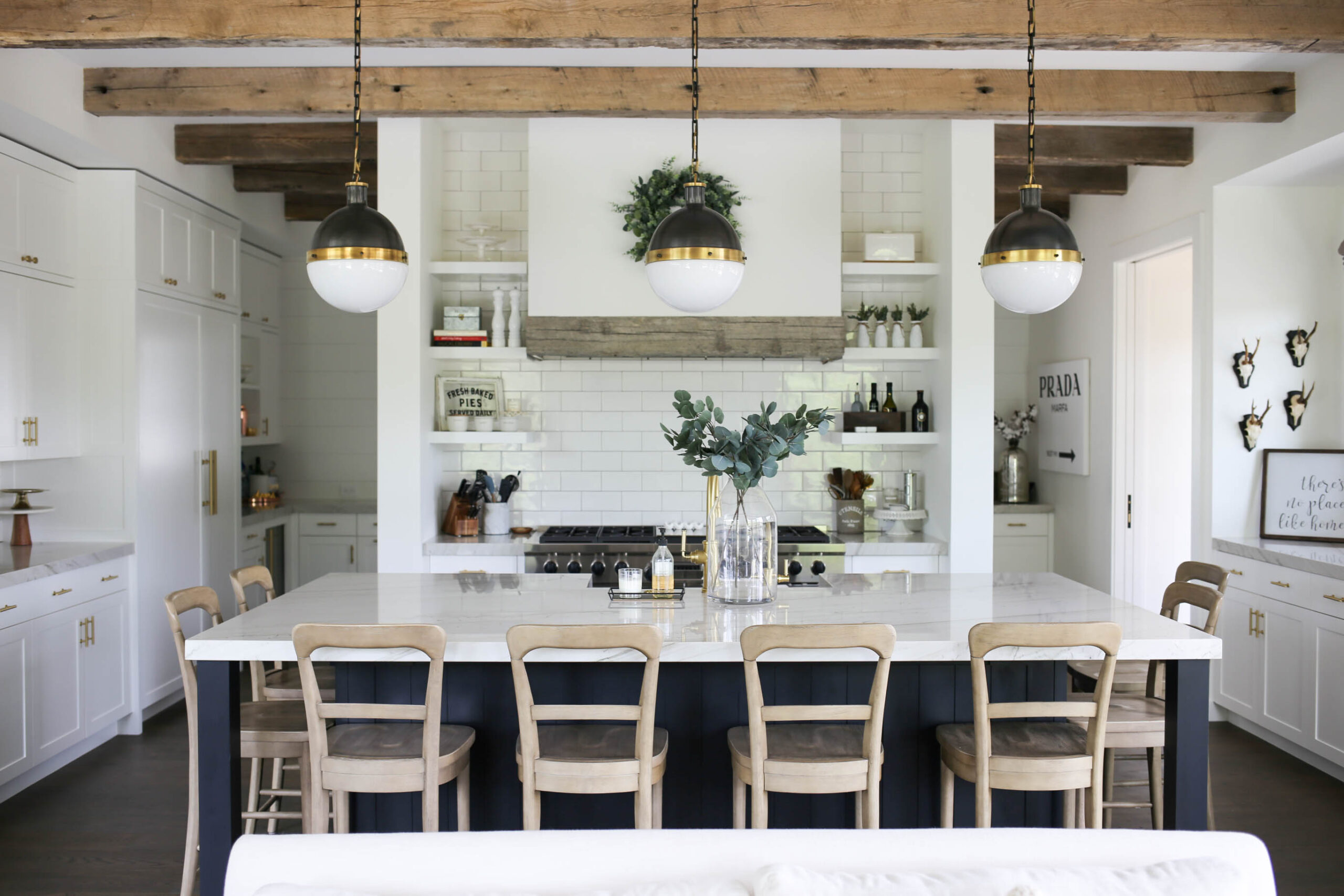Farmhouse Kitchen Cabinet Styles

The enduring appeal of farmhouse kitchens lies in their blend of rustic charm and modern functionality. Central to this aesthetic are the cabinets, which serve as both practical storage and significant design elements. Understanding the various styles available is crucial for achieving the desired look and feel. This section provides a critical analysis of popular farmhouse cabinet styles, finishes, and a specific design example.
Farmhouse Kitchen Cabinet Styles: A Comparative Guide
The selection of kitchen cabinets significantly impacts the overall aesthetic and functionality of a farmhouse kitchen. Different styles offer distinct visual characteristics and practical considerations. The following table compares four popular options.
| Style Name | Key Features | Common Wood Types | Typical Hardware |
|---|---|---|---|
| Shaker | Simple, flat-panel doors with a recessed center panel; clean lines; versatile style. | Oak, maple, cherry, painted finishes | Simple knobs, pulls, or cup pulls; often black, brushed nickel, or oil-rubbed bronze. |
| Raised Panel | Doors with a raised center panel; adds depth and dimension; classic farmhouse look. | Oak, cherry, pine; painted or stained finishes | Larger knobs or pulls; often in a more ornate style than Shaker cabinets. |
| Beadboard | Doors featuring vertical beadboard detailing; adds texture and visual interest; strong rustic element. | Pine, fir; typically painted white or a light color. | Simple knobs or pulls; often coordinating with the overall light color scheme. |
| Slab Door | Simple, flat, and unadorned doors; clean and modern; can create a minimalist farmhouse look. | Various woods, often painted for a more pronounced effect. | Minimalist hardware; often integrated handles or small, flush-mounted pulls. |
Farmhouse Kitchen Cabinet Finishes, Farmhouse style farmhouse kitchen cabinets
The finish significantly impacts the overall mood and feel of the kitchen. Choosing the right finish requires considering both aesthetic preferences and practical maintenance.
Farmhouse style farmhouse kitchen cabinets – Painted White: This classic choice offers a clean, bright, and airy feel. It’s highly versatile, complementing various design styles. However, painted cabinets require more frequent maintenance to prevent chipping and scratches. Regular cleaning and touch-ups are necessary.
Stained Wood: Stained wood finishes showcase the natural beauty of the wood grain. This option creates a warmer, more rustic atmosphere. While generally durable, stained wood is susceptible to water damage and requires regular sealing to protect against stains. The choice of stain color greatly impacts the overall feel; darker stains create a more dramatic look, while lighter stains maintain a brighter ambiance.
Distressed Wood: This finish involves artificially aging the wood to create a worn, antique look. Distressed cabinets add character and a sense of history. Maintenance is similar to stained wood, but the distressed finish may require more careful cleaning to avoid further wear.
White Shaker Cabinets with Black Hardware: A Design Example
A kitchen featuring white Shaker cabinets with black hardware offers a striking contrast that is both modern and timeless. The clean lines of the Shaker style are emphasized by the crisp white finish, while the black hardware adds a touch of sophistication and visual weight. This combination works exceptionally well with countertops made of either a light-colored quartz or a honed Carrara marble. The coolness of the marble contrasts nicely with the white cabinets, while the quartz provides a more modern and durable option. A white subway tile backsplash would complement the overall palette, maintaining a cohesive and classic farmhouse aesthetic. The overall effect is one of clean simplicity, punctuated by the strong visual contrast between the white and black. The result is a kitchen that feels both elegant and functional, a hallmark of the contemporary farmhouse style.
Choosing the Right Farmhouse Kitchen Cabinets: Farmhouse Style Farmhouse Kitchen Cabinets

The allure of farmhouse style kitchens is undeniable, but navigating the choices in cabinets can feel like a political minefield. The seemingly simple decision of material and hardware significantly impacts both the longevity and aesthetic of your investment. Understanding the trade-offs between cost, durability, and style is crucial to avoiding costly mistakes and ensuring a kitchen that reflects your vision – and doesn’t fall apart after a few years.
Cabinet Material Comparison: Solid Wood, MDF, and Plywood
The choice of cabinet material significantly influences both the initial cost and long-term durability of your farmhouse kitchen. Solid wood, MDF (Medium-Density Fiberboard), and plywood each present distinct advantages and disadvantages. Solid wood, typically oak, maple, or cherry, offers unparalleled durability and a classic, high-end aesthetic. However, this premium quality comes at a premium price. Expect to pay considerably more for solid wood cabinets, and be prepared for the ongoing maintenance required to preserve their beauty. MDF, a manufactured wood product, is significantly cheaper, offering a smooth surface ideal for painting. However, it lacks the inherent strength and water resistance of solid wood, making it susceptible to damage from moisture and less durable in high-use areas. Plywood, a layered wood product, offers a good compromise. It is more durable and moisture-resistant than MDF, yet less expensive than solid wood. The strength of plywood depends heavily on the quality of the wood veneer and the adhesive used in its construction. Choosing high-quality plywood can provide a durable and cost-effective solution.
Hardware Options for Farmhouse Style Cabinets
The hardware you select drastically alters the overall feel of your farmhouse kitchen. Simple, understated knobs and pulls can create a rustic, minimalist aesthetic, while more ornate or antique-style hardware can evoke a sense of traditional charm. Consider the following:
- Knobs: Small, round knobs offer a classic, functional choice. They can be made from various materials, including ceramic, metal (brass, pewter, nickel), or wood, allowing for considerable stylistic variation. Smaller knobs tend to be better suited for smaller doors and drawers.
- Pulls: Pulls offer a more substantial grip, particularly beneficial for larger drawers and doors. They range in style from simple cup pulls to elaborate drop pulls, and the material choices mirror those of knobs. Larger pulls can add a more modern or industrial feel, while smaller, simpler pulls maintain a more traditional look.
- Hinges: While often overlooked, hinges play a vital role in both functionality and aesthetics. Self-closing hinges add a touch of luxury and convenience, while exposed hinges (often found in more traditional styles) can add a touch of rustic charm. The finish of the hinges should complement the knobs and pulls.
The choice between knobs and pulls is largely a matter of personal preference and the size of the cabinet doors and drawers. However, maintaining consistency in style and finish across all hardware elements is crucial for a cohesive and visually appealing kitchen.
Mood Board: Hardware and Cabinet Combinations
Imagine four distinct mood boards.
Mood Board 1: White shaker cabinets with brushed nickel cup pulls. This creates a clean, modern farmhouse look. The cool tones of the nickel contrast beautifully with the bright white cabinets, maintaining a sense of airy spaciousness.
Mood Board 2: Dark gray cabinets with black cup pulls. This combination offers a sleek, sophisticated aesthetic. The dark cabinets create a sense of drama, while the black hardware reinforces the modern feel, creating a slightly more edgy take on the farmhouse style.
Mood Board 3: Warm honey-colored wood cabinets with antique brass knobs. This combination evokes a classic, traditional farmhouse feel. The warm wood tones are complemented by the rich brass, creating a sense of timeless elegance and inviting warmth.
Mood Board 4: Light blue cabinets with oil-rubbed bronze knobs. This unexpected combination provides a charming, slightly eclectic feel. The light blue adds a touch of personality, while the dark bronze hardware grounds the overall look, creating a unique and memorable kitchen design. This exemplifies a less traditional, more personalized take on farmhouse style.
Incorporating Farmhouse Style into Your Kitchen Design

Farmhouse style, while seemingly simple, demands careful consideration to avoid a kitschy, inauthentic result. Successful integration hinges on a nuanced understanding of material choices, layout optimization, and a keen eye for detail. Ignoring these aspects can lead to a design that feels contrived and lacks genuine character.
Farmhouse Kitchen Design Schemes Across Various Layouts
The versatility of farmhouse style allows its seamless adaptation to diverse kitchen layouts. However, achieving a cohesive aesthetic requires thoughtful planning and a cohesive vision. Failing to do so can result in a disjointed space lacking visual harmony.
- L-Shaped Kitchen: In an L-shaped kitchen, consider wide-plank, whitewashed oak flooring for a rustic yet refined feel. Pair this with a classic subway tile backsplash in a creamy white or soft grey, offering a clean contrast to the warmth of the wood. Quartz countertops in a honed white or light grey would complement both the flooring and backsplash, creating a bright, airy atmosphere. The cabinets, of course, should be the focal point – perhaps painted a soft sage green or a crisp white, with aged brass hardware adding a touch of vintage charm.
- Galley Kitchen: A galley kitchen benefits from a streamlined approach. Here, a darker, more durable flooring option like reclaimed wood would add character without overwhelming the space. A simple, yet striking, backsplash, such as a patterned cement tile, can inject personality. Butcher block countertops offer both functionality and a rustic aesthetic. The cabinets should be kept relatively simple – perhaps a clean white with black hardware to create a clean, functional space. Avoid overly ornate details in a small space like this.
- U-Shaped Kitchen: A U-shaped kitchen provides ample opportunity for creative expression. Consider using a combination of materials for the flooring, such as a mix of large format porcelain tiles and a wood accent strip, adding visual interest. A more elaborate backsplash, such as a mosaic tile in earth tones or a stone slab, can become a beautiful statement piece. Granite or marble countertops in a neutral tone would add elegance. The cabinets could incorporate a two-tone approach – for example, a darker base color with lighter upper cabinets – to create visual depth and balance within the expansive layout. The use of open shelving can also enhance the farmhouse aesthetic.
Lighting to Enhance the Farmhouse Aesthetic
Lighting plays a crucial role in setting the mood and highlighting the architectural details of a farmhouse kitchen. Poor lighting can undermine the entire design, creating a dull and uninviting space.
- Pendant Lights: Over an island or peninsula, large, industrial-style pendant lights in aged brass or black metal add a touch of rustic elegance. Their placement should be strategic, ensuring sufficient illumination without creating harsh shadows.
- Recessed Lighting: Recessed lighting provides ambient illumination, enhancing the overall brightness of the kitchen. Careful placement is essential to avoid creating a sterile feel; strategically placed recessed lights can highlight key features like the backsplash or countertops.
- Sconces: Wall-mounted sconces flanking a range hood or positioned along a backsplash offer a softer, more intimate light source. They add a layer of warmth and sophistication, complementing the overall farmhouse style. Choosing sconces with a distressed finish further enhances the rustic charm.
